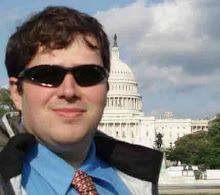Americans took 10.7 billion trips on public transit last year, up 4 percent from 2007, the American Public Transportation Association said. This is the highest level of ridership in 52 years.
"Where many of the other indicators in our economy are down, public transit is up," APTA Vice President Rosemary Sheridan told Reuters.
U.S. gasoline prices set records in 2008, rising above $4 a gallon in July. Gasoline costs began to cool off in the fall, however, as the effects of a global economic downturn began to curb oil demand.
Although gasoline prices are down, Sheridan said that many people are sticking with public transportation to save money.
Public transit trips were up 4.12 percent in December to 842 million. Ridership on public transportation rose 1.68 percent to 2.7 billion trips in the fourth quarter of 2008, compared to the same period a year earlier.
This is the fifth consecutive year the association has reported record ridership. Sheridan said the economic slowdown might dent public transportation use in 2009, though, as increased unemployment may lead to fewer commuters.
As Americans rode public transit more last year, they drove less. The U.S. Transportation Department reported last month that highway travel fell 3.6 percent, or almost 108 billion miles, in 2008 from 2007.
Due to the global recession, gas prices have declined markedly since their peak. Wise city planners would begin expanding mass transit options at the present, as gas prices can only rise as global demand increases and supply dwindles. Money for civic projects will be tight in the next few years, but investing in mass transit will provide major benefits for urban areas. Mass transit, when run well, reduce carbon emissions, reduce traffic congestion and allow for inexpensive easy transportation options for local residents. The time is now to invest in public infrastructure, not later when gas prices edge back up.




No comments:
Post a Comment